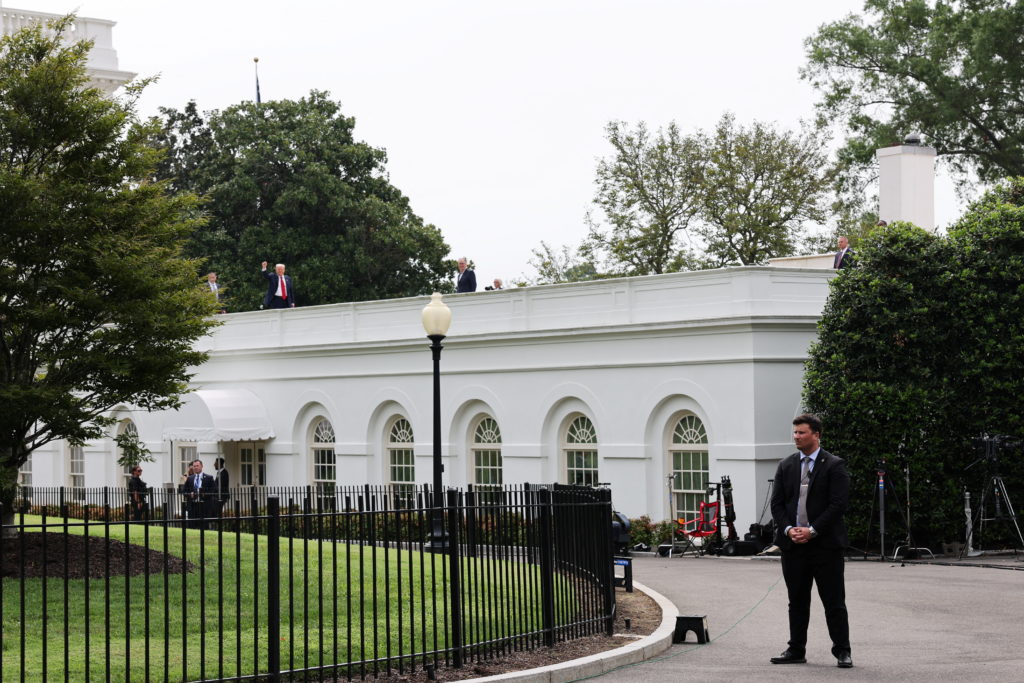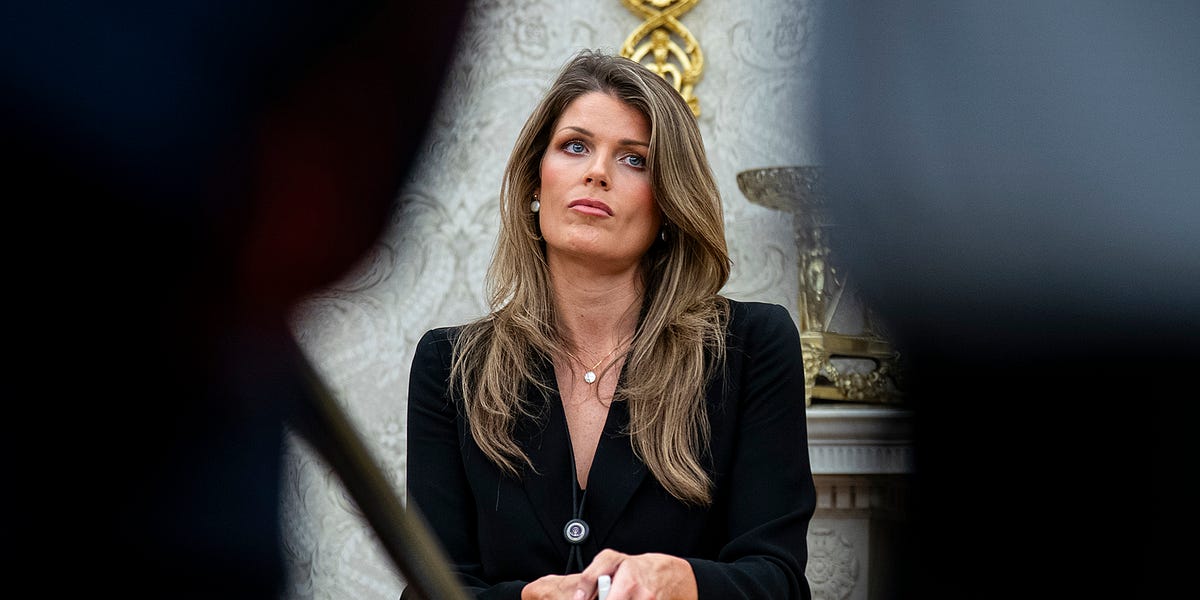President Donald Trump signed executive orders Monday aimed at ending cashless bail, a criminal justice reform that advocates say actually increases public safety.
One order threatens federal funding to state or local governments that offer cashless bail and instructs Attorney General Pam Bondi to create a list of jurisdictions that have “substantially eliminated cash bail” for crimes that pose “a clear threat to public safety.” A second order looks to end cashless bail in the District of Columbia, where Trump recently enacted a temporary federal takeover of law enforcement.
WATCH: Trump signs executive orders on cashless bail, flag burning
Trump blamed 2020 bail reform efforts for a rise in crime during his remarks Monday.
“Somebody kills somebody, they go in, don’t worry about it, no cash, come back in a couple of months. We’ll give you a trial. You never see the person again,” Trump said.
Trump’s claims conflict with national crime data that shows violent crime has dropped consistently for the last several years, following a peak during and after the pandemic. A trend that happened in jurisdictions whether or not they were among the handful which enacted bail reform.
With cash bail, a person charged with a crime may make a payment as a condition for being released and as a guarantee that they will return for their court date. But critics argue that cash bail discriminates against people based on their ability to pay, can destabilize families and communities and make it harder for people to get a fair trial.
“Pretrial incarceration does not make us safer or healthier,” said Scott Hechinger, a former public defender and executive director of Zealous, a group that helps public defenders advocate for their work.
Hechinger called Trump’s executive order “part of a long, consistent, reliable pattern of using fear and sensationalism around bail reform and other modest reforms.”
Why some states and D.C. enacted cashless bail
An early bail reform effort in Washington D.C., dating back to 1992, allowed judges the option of releasing a defendant without paying a bond if they were accused of non-violent offenses and weren’t a safety or flight risk.
Today, several states, including Illinois, Alaska and New Jersey and at least 30 cities have cashless bail or some other kind of bail reform.
New York passed its bail reform law in 2019, following years of efforts by advocates and the new policy went into effect in 2020. In 2010, a teenager named Kalief Browder was accused of stealing a backpack. His family was unable to afford bail and Browder spent almost three years imprisoned on Riker’s Island, about two of which were in solitary confinement. The charges against him were ultimately dropped. Two years later, Browder died by suicide.
“He was accused of a low-level thing, he was 16 years old, he was in jail for 3 years for a case that was ultimately dismissed,” Rena Karefa-Johnson, vice president of national initiatives at FWD.us, told PBS News. “He endured so much trauma and horror that he ultimately took his own life. It was a capsule of everything that is wrong and dysfunctional of our pre-trial system.”
New York bail reform “was an extraordinary win. It was a really big policy and when it went into effect that flew in the face of everything that people had fearmongered about,” Kerefa-Johnson said.
What are the benefits of cashless bail
Studies have shown that cashless bail does not result in a hike in crime and actually may help reduce recidivism. A 2024 study by the Brennan Center for Justice found “there is no statistically significant difference in crime rates between cities that reformed their bail policies and those that did not.” A 2023 report by the Data Collaborative for Justice found that cashless bail for misdemeanors in New York cut the likelihood that a person would be rearrested for another crime by about half.
Pre-trial detention can be disruptive, not just for the person facing charges but for their families, too, who may lose housing or income.
Pre-trial “freedom actually saves a ton of money, makes us healthier and safer in all the places that have tried it. Keeps families together, keeps people in jobs,” Hechinger..
Advocates say that the wider benefits of cashless bail often are not discussed.
“We have hundreds of thousands of success stories … probably millions of people who have been released pre-trial, show back up to court, being in their jobs, are able to be with their families pay their bills, have better outcomes like folks with means, in their cases because they’re allowed to fight their cases from a position of freedom while they’re presumed innocent,” Hechinger said.
Alec Karakatsanis, a civil rights lawyer and the co-founder of Civil Rights Corps, agreed that cashless bail makes it much easier for people accused of crimes to fight their case.
What is the pushback to cashless bail?
Karefa-Johnson said efforts to overturn bail reform in New York began almost as soon as it became law in 2020. Gun violence, in particular, increased that year and spiked in the summer of the COVID-19 pandemic. Opponents of bail reform pointed to this increase as evidence backing up their stance.
“Like many big social changes that shift power dynamics, … prosecutors, police and defenders of the status quo were livid at the way it removed discretion to unjustly imprison people,” Kerefa-Johnson said.
New York’s case is not unique. Politicians and media figures have attributed increases of crime to bail reform. When Trump announced his takeover of DC’s law enforcement, U.S. Attorney for D.C. Jeanine Pirro, condemned cashless bail.
“”We need to go after the DC Council and their absurd laws. We need to get rid of this concept of ‘no cash bail,’” Pirro said. “We need to recognize that the people who matter are the law-abiding citizens. And it starts today.”
Cash bail gives police and prosecutors “enormous leverage to coerce quick guilty pleas” because of the prospect of jail time while awaiting trial, Karakatsanis said.
The author of “‘Copaganda,” a book on policing and the media, Karakatsanis added that news media can sometimes reinforce negative stereotypes about bail reform, repeating unproven links between cashless bail and increases in crime including in mainstream newspapers and local or national television networks.
“Reducing the use of cash bail increases public safety,” Karakatsanis said. “However, throughout the last few years … the mainstream media has let certain bad-faith actors portray bail reform as somehow linked to crime. This is kind of like climate science denial or flat earther thinking.”
What’s next after Trump’s executive order?
Ames Grawert, senior counsel for the Brennan Center, an organization that studies criminal justice, said it was difficult to predict outcomes of Trump’s executive orders.
Trump does not have the ability to unilaterally end cashless bail but the threat to pull funding could undermine state programs that depend on federal money. Grawert believes this move would likely end up in the courts, but there are many unknowns, such as which would end up on their list and which grants the Trump administration would seek to cancel.
It’s hard to estimate the effect if cashless bail were ended, but Grawert predicted that “states can end up spending a lot more money than they really had in mind on correctional costs.”
“And then there are of course the collateral costs to people of spending time in jail needlessly,” he said.
The Data Justice Collective estimates that in NY state alone, in the first year of bail reform about 24,000 people avoided pre-trial detention.
Hechinger argued that crime could go up if cashless bail were ended.
“If [cash bail] doesn’t deter crime and actually [does] the opposite, if it actually is criminogenic and the fact that it actually increases the likelihood that violence is going to happen, why do we do it?” Hechinger asked.
Hechinger said the blowback against cashless bail, including Trump’s executive order, will make it harder to advocate for these reforms in the future, even though they have been, he says, “wildly” successful, because people will be “scared of being labeled soft on crime.”
“It’s harder to step up and bravely say, ‘look, we’re actually trying something new…’,” Hechinger said.
Source link


